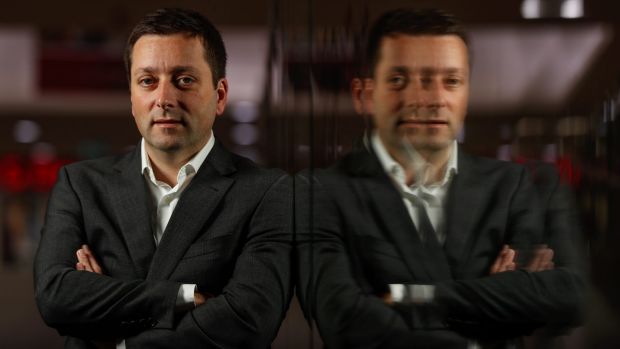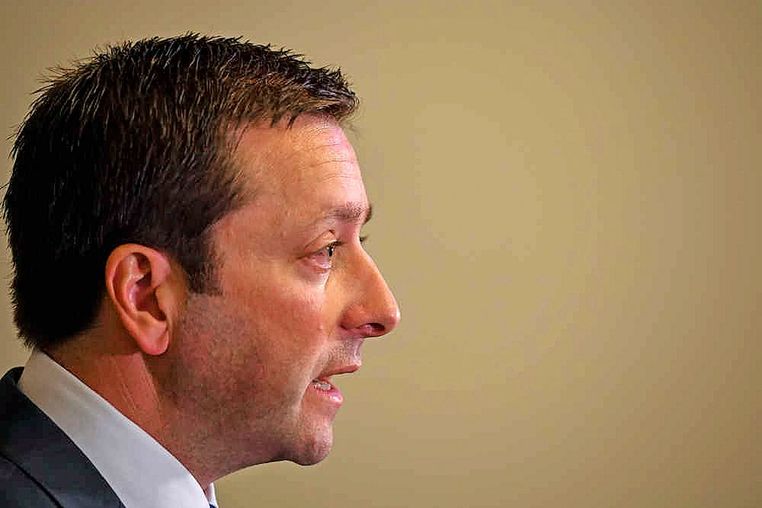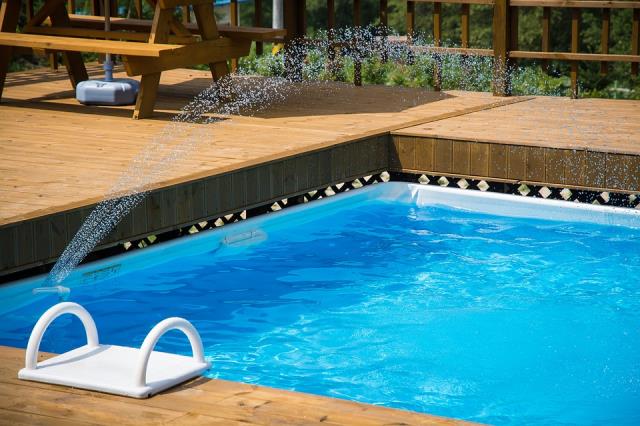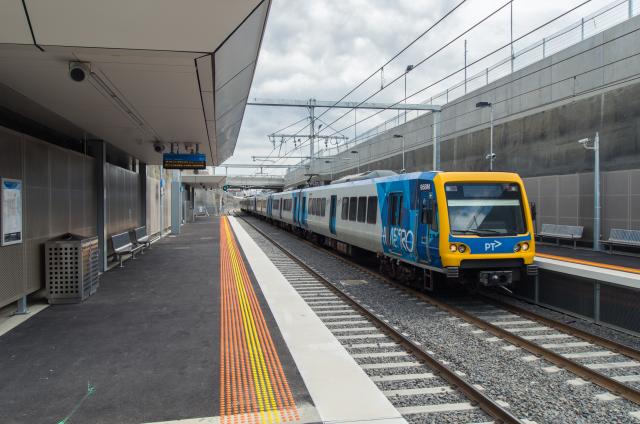In November, Victorians will go to the polls and choose to re-elect the Labor Party for its second consecutive term, or bring in the Coalition. Charlene Macaulay sat down with Opposition leader Matthew Guy to discuss his plans for the north-west, and what he sees as the big issues.
What do you consider to be the biggest issues facing the western suburbs, and what will you do to address those issues if elected?
Like every part of Melbourne, I think the west is suffering from a crime wave that is being ignored by the state government. Crime is up more than 20 per cent since Daniel Andrews came to power, and he’s put out a lot of press releases, but has done not much to actually deal with the crime wave.
We want to make Caroline Springs a 24-hour police station considering the extent of the population growth in the north-west, we also want to bring in bail reform, mandatory sentencing for offences against the person, and more to the point, change the attitude in the justice system so that the justice system works for those people who obey the law, not protect those who break it.
It’s not just about the numbers of police anymore; it is primarily about the criminal justice system. I think it’s important for Victoria that those 11 key violent acts against the people – whether it’s home invasions, car jackings, assaults – people who are repeatedly doing this, have a mandatory sentence. What we’re seeing in Victoria today is these violent offenders who [commit crime] once, they get bailed, then they do it while they’re on bail, and they get let off … and it takes about four or five offences before they’re incarcerated. Think of all those people who are hurt on those four or five offences along the way who would not have been hurt had these people been subject to a mandatory sentence on the second offence. Will it require more prison beds? Yes, it will. Will I build more prison beds? Yes, I will. Will we have a corrections policy to match that? Yes, we will.
In relation to the western suburbs specifically, I’d say one of the issues the west is feeling more than anywhere is the state is unmanaged population growth. Population growth can be a good thing, but when it’s unmanaged, it becomes a massive negative, and Melbourne’s outer west and north-west is evidence of population growth that is now getting out of control.
I believe we need to fix our growth boundary and start moving population growth to regional centres, to decentralise … and not just Geelong and Ballarat and Bendigo, whether it’s centres like Ballan, or centres in Plan Melbourne like Koo Wee Rup, Kilmore or Warragul, we have to grow the whole state. You can’t just focus everything on Melbourne.
ABS statistics are saying that Melbourne’s going to add two million people, more than two million people, in the next 20 years. That means that Melbourne is going to add the population of Brisbane in the next 20 years … and this government’s plan to manage that growth is to say we’re building one railway tunnel in the middle of the city and dipping three dozen level crossings, it will be fine. It will not be fine.
You can’t build roads to manage two million people on top of your existing population, you can’t build the railway lines to match that, you need a comparable strategy of regional growth to take some of that pressure off, and that’s why I think decentralisation is so important. We’ll have a minister for decentralisation, a state government department focused on decentralisation, we’ll have immediately a Minister for Geelong, a Geelong planning statement, a Geelong infrastructure audit all done in the first six months to focus sustainable growth on a place like Geelong earlier and to help take some of that pressure off Melbourne’s west. But we cannot keep growing Victoria the next 30 years the same way we have the last 30 years.
Tell me more about your vision for Geelong.
I think Geelong should be a city of half a million by the mid part of this century. It’s a metro area of about 185,000 now … but it can’t just be about dumping people in Geelong, it needs to be done sustainably and sensibly. It’s got a north facing city centre, so it could easily have greater density, it’s got activity areas that could grow, again with medium density, it’s got areas and suburbs that should be protected through a neighbourhood residential zone, it’s got growth areas that can be managed.
In the next 12 months you’ll see quite a bit from my side around long-term planning and how we want to grow Geelong sustainably, starting with a Minister for Geelong dedicated to that city’s future, because it is, in my view, the most important city to accommodate growth outside of the Melbourne metropolitan area.
What other departments are you looking to introduce?
They’re the two primary changes I’d make in terms of government structure, because we want to focus the whole of government on decentralisation. I want to have the minister for decentralisation front and centre, in cabinet, at the moment it’s Peter Walsh, who’s the deputy leader of the Coalition, so that every decision made is factored around decentralisation.
The western suburbs have long held a reputation for being Labor’s heartland. Considering the margins, do you believe you could actually win a seat come November? If so, which seats do you have your eye on, and why?
There’s a couple. A number of absent Labor members in Tarneit and Werribee – Telmo Languiller’s seat, where he’s retiring, gives us enormous opportunity. Tim Pallas doesn’t live in his own seat, he doesn’t care about Werribee, our candidate will be from Werribee. Jill Hennessy doesn’t live in her seat. Don Nardella’s seat in Melton I think has enormous opportunities for the party.
Go a bit further north in Sunbury, there’s a three per cent swing to us in the last election, and we have clear commitments for Sunbury – a specific City of Sunbury, which we stand by as a promise. We will have a City of Sunbury, we will give them their own council, we will have that split from Hume. I think Sunbury wants that, I think they’re entitled to that, they have asked for that, and I will deliver that for them. That’s a clear point of difference: Labor doesn’t want a city of Sunbury, I do. And the people in Sunbury will have that clear choice to be masters of their own destiny, or to stick with a council based in Broadmeadows. It’s up to them.
The Liberal Party has already held preselection for the seat of Tarneit, when will preselection occur for these other seats?
They’ll come very early in the new year.
Will preselected candidates reside in the electorates they are standing in?
They’ll be from Melbourne’s west, absolutely – unless they’re a kilometre or so out [from the electorate]. If you couldn’t be bothered living with the people you represent, then you don’t deserve to represent them. If Tim Pallas, as the treasurer of Victoria, wants to live 25 kilometres away from the people he represents, how can they have faith he’s a true local representative? No wonder he wanted to put a jail in his own seat, just 400 metres away from people’s houses.
Wyndham and Melton are among the fastest growing areas in the state, and as a result, are struggling the keep pace with the infrastructure needed to cope with the population growth. The Labor Party has allocated $50 million to growth councils over two years to address this. What would a Coalition government do?
Twenty-five million dollars a year for Melbourne’s growth areas is like going to a milkbar and asking for a five cent lolly. The infrastructure backlog in Melbourne’s growth areas is enormous, and it won’t be able to be addressed in just two years time. I can’t and won’t make commitments to fix them all in two years, because they can’t be addressed in two years, which is why I keep saying we need to start growing those areas differently and growing population outside of those areas to have a breather on population growth in our growth areas.
Our growth areas face enormous challenges, principally on traffic, which is why we have an intersection elimination program primarily focused on some of those growth areas and arterial roads. Even that will not be successful as a stand-alone policy, it will be successful if it’s matched with other policies like decentralising growth.
Why have you chosen to focus on intersection removals, and how will the list of intersections be selected?
RACV and TAC have got accident and congestion data, and that’s very important in choosing those locations. It’s important because I think removing level crossings has been good policy, there was 11 done under the Napthine government and this government has continued with that – you don’t often hear oppositions give credit, but I will give credit.
A natural progression of removing level crossings is to remove road intersections, because road intersections are just as congested. [Some] road intersections have 20,000 vehicle movements per day … that’s why removing some of them is very, very important to do. On top of that, having digital technology to analyse sequencing of traffic lights at the intersections near those eliminated will then help with arterial traffic flow. Andrew Elsbury, who’s a former member of parliament, said his biggest issue wasn’t the West Gate Freeway, it was Leakes Road getting onto the freeway. He kept saying it takes longer to get onto the freeway than it does on the freeway, and those arterial roads are some of the biggest problems. You can build arterial roads and you can widen arterial roads, but if you don’t have continuous flow by removing intersections or putting digital technology in traffic lights, you’ll have a bigger bottleneck than what you started with.
If elected, will you continue with Labor’s commitment to remove 50 level crossings by the end of 2022, and if so, will you keep to the list as it is, or will you review and change the remaining level crossings?
I understand the government will sign contracts for them [by the election], so we’re not going to break those contracts, that [project] would be certainly finished off. And I wouldn’t be changing the list if the government has put a list and signed contracts, then that is the list that will be completed.
Many councils in the west say rate-capping and cost shifting has hampered them in providing and sustaining adequate levels of infrastructure investment. What are your thoughts on this, and how would a Coalition government work with local councils?
I think rate-capping has had some adverse consequences for some smaller country councils. I think there are bigger city councils that need to make sure they’re doing business as efficiently as they can be. Governments usually operate fairly efficiently, and have to. I think local government needs to operate efficiently and needs to make sure it’s giving the best value for money to its ratepayers. I think the days of 10 per cent rate rises, year on year, are well and truly over.
I’m more than happy to work with local government, and I’ve spoken to the MAV, I’ve spoken to to VLGA about some of the infrastructure pressures they have, and one of the keys pressures around population growth is what they want to talk about.
In September, Wyndham council said about $400 million was needed for the council’s top five unfunded transport priorities, which include the Black Forest Road train station; Hoppers Crossing level crossing removal; Ison Road bridge over Melbourne-Geelong rail corridor; Outer Metro Ring Road and Western Interstate Freight Terminal. If elected, what would you do to make this happen?
Some of those are on some of our infrastructure priority lists, I’d have to say though that some are very, very big projects, like the Outer Metropolitan Ring Road, which is a very substantial road – nearly 100 kilometres. Some of the level crossing removals, I can understand why the council is frustrated, given that $7 billion has gone to Melbourne’s southern suburbs and a pittance has gone out west. I guess western suburbs residents will be forgiven for thinking that the government takes them for granted.
What projects are on your priority lists?
Certainly looking at [removing] the crossing at the railway line, and the freight terminal as well.
In Wyndham, there is about 45 police for every 100,000 residents, compared with a state average of 102 officers for every 100,000 residents. What is your plan to address this shortfall?
We’ve called for an increase in police numbers for some time, the government has recently announced they’re going to do that [but] they’re going to take some time – a long time – to come on. This is the problem of the government, waiting effectively two-and-a-half years before committing to increase any police numbers. The Police Association has put out figures that show the biggest problems, the biggest gaps in our police numbers are in growth areas. I think our growth areas need to be priorities when it comes to new police numbers coming on.
How many new schools will you fund in Wyndham, and in what timeframe?
We haven’t settled on an actual number, but transport and education challenges are the two most pressing issues of population growth, particularly in Melbourne’s western suburbs. The time it takes for the planning process to get a Catholic or independent school built is horrendous, the number of state schools that are needed is astonishing … it’s a massive challenge.
And yet, less than 150 kilometres from Werribee, you’ve got some councils in population decline where their schools are facing closure. That’s the story of two Victorias.
In a submission to the state government’s inquiry into perinatal services, Mercy Health said Werribee Mercy Hospital was “at maximum physical capacity” for the provision of maternity and newborn services and would need 48 multi-day maternity beds by 2026, double the current number, to cope with demand. Is this something you would implement if in office?
More than happy to, to take some advice from them. I didn’t know about that, I mean a dozen babies a day is just stunning and how to manage that kind of pressure, let alone have enough birthing suites – you can only use birthing suites two or three times a day. I’m happy to have a look at some of those figures.
Wyndham train station car parks are overflowing, with many calling for multi-storey carparks to meet demand. Is this something you would implement if in office? If not, what is the solution to this problem?
It’s going to have to be one of the solutions, having park and ride stations. When the Brumby and the Gillard governments built the Regional Rail Link, it was incorrectly titled. It’s not a regional rail link, it was an extension of a suburban rail service. It was a suburban rail service with country rolling stock and as a consequence, it was at capacity at virtually day one. Not just the trains, but also the facilities around the trains … all of it is at capacity.
I think we’re going to have to look at some different ways of accommodating the park and ride growth. At Tarneit, at Wyndham Vale, I’ve seen it firsthand, it’s astonishing, the amount of people at the station every morning. It’s great that they’re using it, but many are using it out of necessity – it’s that or the West Gate.
Also, there’s not enough job growth locally. If the government’s focus is moving job growth to downtown Melbourne, then of course we’re going to face these problems. I rezoned the Werribee Employment Precinct as planning minister … to bring that whole employment precinct online soon. It’s now been nearly four years, and the government’s done not much with it. This should be a priority job growth area – Wyndham’s growing exponentially. The whole point of that area was so that people in Point Cook and Werribee and Wyndham and that whole growth corridor have a job at East Werribee so that they don’t have to go into the city. When they say, what did you do for the west? Well, we rezoned an area four times as big as central Melbourne to bring jobs to the west. [We] found money to build that Sneydes Road interchange to get people in it.
Throughout the environment effect hearings into the West Gate Tunnel Project, air quality experts, community groups and even the Inquiry and Advisory Committee recommended filtration systems in the tunnel, but this was ignored by the government. Would you do things differently in government?
I think it’s a dog of a project, it’s a terrible project. It is not the best outcome, the best outcome is a tunnel link, or a freeway link that starts at the Ring Road and goes to the Tullamarine Freeway that takes pressure off the West Gate Freeway, not just the West Gate Bridge.
This road is going to add tolls on the West Gate Freeway, and then through the tunnel an $8 charge for people driving to the city in peak hour. Why would anyone pay after sitting in a car for 90 minutes on the West Gate Freeway? Under what circumstance does the government think this is a good deal for Melbourne’s west?
If the Liberals win government, will you put in place the truck bans that Hobsons Bay council and residents are asking for to mitigate the impact of the West Gate Tunnel, particularly in Millers Road, Altona North?
We’ve had a look at some of those, and will probably make some announcements early in the new year, but there’s certainly some legitimate concerns, very legitimate concerns. You can’t expect them to keep living like that.








